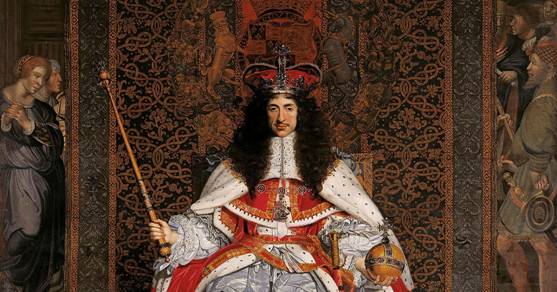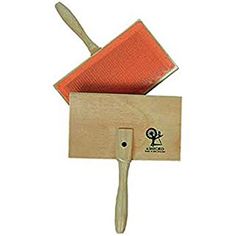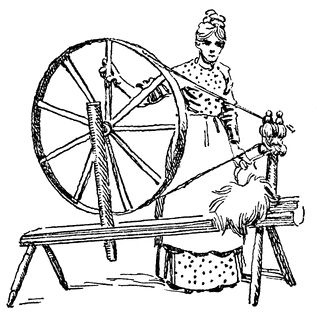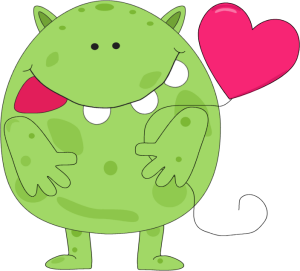
Salty Sam’s Fun Blog for Children
Number 452
The Commonwealth
Hello Everyone

Did you ever meet Queen Elizabeth in person?
l don’t think she ever visited Rocky Bay although she travelled to very many places.
lf you did meet her you would have been very aware of the beautiful aura that she had and that is not something you can ever pick up on television.
Have you ever met the King? We have a new king now.
You may think that we have always had a monarch going right back in history.
Before we had just one king or queen on the throne there were a few in various parts of this island because the island contained more than one country and before that, tribal leaders of tribes scattered all over the place whose names have largely been forgotten over time.
Ecgberht, King of Wessex became the first King of England in 829.
But there was a period of history when we did not have a monarch. This time was called The Commonwealth. Another name would be republic.
There are many republics in the world. A republic is a country that does not have royalty.
Let me tell you how it came about…
The second son of James l was King Charles l. His portrait is at the top of the post.
James l was the king that followed Elizabeth l – she had no children to give the throne to. James came down from Scotland to create the United Kingdom. He was the James l of England but James Vl of Scotland. There had been five other kings of Scotland before him that were called James.
Charles did not expect to become king; he thought the title would be given to his older brother. But his older brother Henry died before their father.
Charles believed in the Divine Right of Kings. That means that he thought that God decreed that he should become king and, therefore, it was he alone that should make decisions about ruling the kingdom.
Because of this belief he became a very stubborn ruler.
He constantly argued with his parliaments and decided to disband the members completely for eleven years.
The English Civil War broke out during Charles’ reign.
Parliament was a necessary tool of government and was by this time the only body able to impose taxes.
For many decades, there was tension between the crown and parliament but the situation came to a head in 1642 when Charles tried to arrest five Members of Parliament.
However, they were tipped off and managed to flee to safety.
War broke out between two opposing forces within the kingdom.
The Royalists fought against the Parliamentarians. You will often hear them referred to as Cavaliers and Roundheads.
Cavaliers wore large stylish hats adorned with feathers and the Roundheads wore round helmets.
The Royalists won a battle at Edgehill and then Chalgrove Field. But then they were defeated at Marston Moor and completely crushed at Naseby in Northamptonshire (in central England).
The New Model Army of the Parliamentarians declared victory over the King.
The King’s defeat at Naseby marked the end of the first part of the Civil War.
Charles fled to get help from his Scottish allies, his father had come from Scotland to take the crown and the family still had ties there, but in 1647 the Scots handed Charles over to Parliament.
Charles then escaped but was recaptured and held in Carisbrooke Castle on the lsle of Wight. He tried to raise a Scottish army to invade England but the army was defeated at Preston in August of 1648.
lt was the end for Charles.
The King was put on trial for waging war against his own kingdom and Parliament in Westminster Hall. This is a stone building just next to the modern day Houses of Parliament.
He refused to recognize the authority of the court but nevertheless they passed a guilty sentence and he was executed by beheading on 30th January, 1649 in front of the Banqueting Hall in Whitehall.
Scotland declared Charles ll to be king but England had different ideas.
The period between the execution of Charles l and the restoration of his son Charles ll in 1660 is divided into two parts.
The English Commonwealth lasted from 1649-1653 and the Protectorate of Oliver Cromwell and then his son Richard 1653-1659.
ln first period, Cromwell tried to work with the existing system of Parliament and in the second he tried to create new institutions. The numbers of Members of Parliament were increased from 53 to 400.
Oliver Cromwell was the son of a squire and first entered Parliament in 1628. He became the leading general of the Parliamentarian armed forces and then after the war, Chairman of the Council of State and then Lord Protector.
Cromwell was a tall man at nearly six feet and although not handsome, was considered charming and had great presence when you met him, by all accounts.
He was very religious and believed that everything he did was guided by God’s will. At the same time he was very tolerant of other people’s views.
He loved enjoying his free time. He liked riding, hunting and music.
When Oliver Cromwell died in 1658, his son inherited the role of Lord Protector just like a prince would have inherited a throne from his father!
ln 1660, a new Parliament was called and it negotiated the restoration of the monarchy. That means they wanted to bring it back – but under different rules.
The throne went to Charles l’s son, Charles ll.
He had been living in exile in Europe, so travelled back to England to claim his birthright. He was welcomed back into London on his 30th birthday and all legal documents were back-dated to show that he had been the king since his father’s death.
After Cromwell’s Puritan rule of England, Charles ll seemed to be a very colourful and flamboyant figure.
So the country had a king again; but this monarch and subsequent ones were never to have as much power as the ones before them.
On the other hand, Parliament had more power than ever before.
Today the monarch is a constitutional head not one who has the power to make laws. That is the job of Parliament.
Now have a look at the Picture Gallery to see the characters in this story.
lf you like my blog, please support it by telling all your friends and followers about it.
Thank you!
And see you again next Fun Friday!
Love and kisses
Salty Sam

www.christina-sinclair.com


Bill and Bob’s Joke of the Week![]()
![]()
Bill: What do you call a fake noodle?
Bob: l don’t know. What do you call a fake noodle?
Bill: An impasta!

Salty Sam © Christina Sinclair 2015
Unauthorized use and/or duplication of material from this blog without express and written permission from this blog’s author and owner is strictly prohibited.
Links may be used to www.christina-sinclair.com

Picture Gallery
 James I created the United Kingdom of Great Britain (Britannia Magna)
James I created the United Kingdom of Great Britain (Britannia Magna)
 Oliver Cromwell
Oliver Cromwell
 Royalists
Royalists
 Parliamentarian
Parliamentarian
 Charles II was the king restored to the throne
Charles II was the king restored to the throne
after the Commonwealth ended


 THE SALTY SAM NEWS DESK
THE SALTY SAM NEWS DESK

One of the berries you will see in the hedgerows around this time of year is spindle. Spindles are very small woodland trees.

If you go out for a walk and you are eagle-eyed, you may see some yourself.
Spindle berries are a very unusual pink colour and when they split the seeds you can see are orange. These seeds are food for birds, mice and foxes but are poisonous to humans. The leaves of the spindle tree turn bright red in autumn.

The seeds are supposed to make a very good hair tonic.

Spindle wood is very hard and straight and was traditionally used to make spindles for spinning wool.
 A spindle to wind wool onto
A spindle to wind wool onto

Wool taken from sheep went through a series of processes before it could be used for knitting or weaving.

Wool was usually shorn from a sheep once a year in spring when the animal did not need it for warmth over the warm summer season. Large scissors called clippers were used.

The best parts of the fleece were picked out to use.
The fleece was washed. It could be full of grease called lanolin that the sheep produces and other things like dried seeds that have got caught up in it when the sheep walked around.

The wool was carded – meaning combed and then it was rolled into long strips.

These were fed together and twisted into long thinner strings called yarn by spinning which was always done by hand and a spinning wheel by hand before large industrial machines were invented.

A spinning wheel
If a spinning wheel was small enough, the operator, usually a woman,
could sit down while they were using it and move the wheel by using a foot treadle
Using a treadle (pronounced treddle) could enable the operator to pick up a good speed without the use of electricity

The yarn was wound into skeins or balls.
Dying can take place before or after the wool is spun.
Nowadays, when the wool is spun to be very thin, it is wound by huge machines onto cones and these can be used by hand knitters, knitting machines or weavers.

A weaving loom

Hand spinning

*********************
TO ADVERTISE ON THIS BLOG
PLEASE CONTACT:
christina.sinclair.ads@aol.co.uk
*********************

 Quick Quiz
Quick Quiz
Draw a column of boxes 4 across and 12 down
Write the letters COMMONWEALTH down the left side
Put the 4 letter answers to these clues across inside the boxes
- people in a play
- a monster in fairy tales
- place to dig out coal or metal ore
- legend
- used to make porridge
- amphibian looks like a lizard
- a place in the ground to get water
- opposite of difficult
- old
- a join
- a light colouring
- around an angel’s head




lt’s the Weekend!

HOW TO MAKE SNOW BOOTS FOR A 12” DOLL
These boots are really pretty; you could make them on a darker colour too.

BOOT RIGHT SIDES (KNIT TWO)
Using 4mm knitting needles and pink dk yarn cast on 8 stitches
Knit 2 rows of garter stitch
Knit 2 rows of stocking stitch
Decrease 1 stitch at the beginning of the next knit row
Purl 1 row decrease at the end by knitting 2 stitches together
Knit 4 rows of stocking stitch
Knit 4 rows of garter stitch
Cast off
BOOT LEFT SIDES (KNIT TWO)
Using 4mm knitting needles and pink dk yarn cast on 8 stitches
Knit 2 rows of garter stitch
Knit 2 rows of stocking stitch
Decrease 1 stitch at the end of the next knit row by knitting 2 stitches together
Decrease at the beginning of the next purl row
Knit 4 rows of stocking stitch
Knit 4 rows of garter stitch
Cast off

TO MAKE UP
Using over-sew stitching and with right sides together sew around edges leaving the tops of the boots open
Turn right sides out
Sew a fluffy white yarn trim around the tops of the boots in a double layer (one at a time) – this technique is called couching – look at the embroidery stitches illustration below

Please note that the material on this blog is for personal use and for use in classrooms only.
It is a copyright infringement and, therefore, illegal under international law to sell items made with these patterns.
Use of the toys and projects is at your own risk.
©Christina Sinclair Designs 2015


Quick Quiz Answers
- CAST
- OGRE
- MlNE
- MYTH
- OATS
- NEWT
- WELL
- EASY
- AGED
- LlNK
- TlNT
- HALO


Embroidery Stitches



